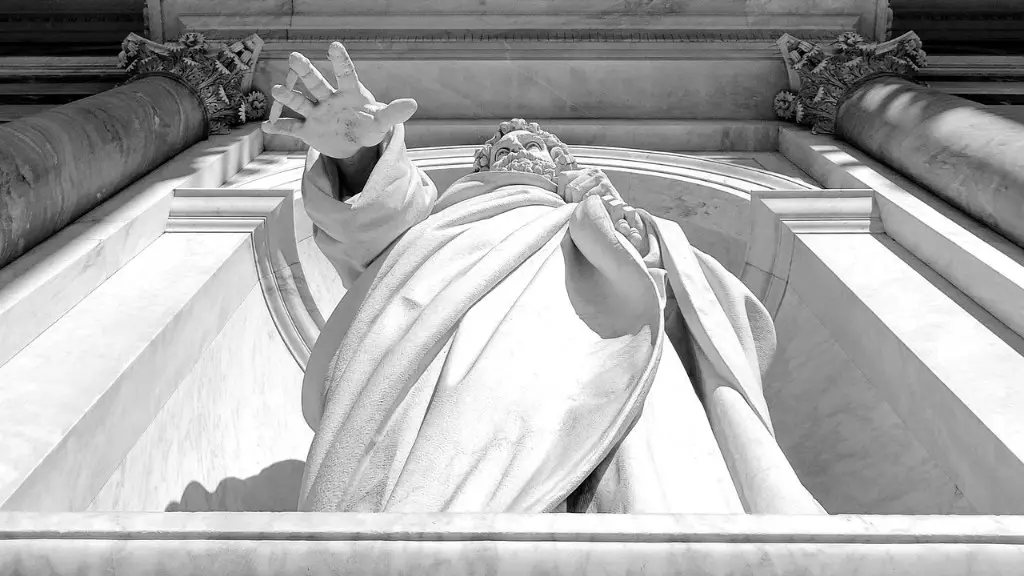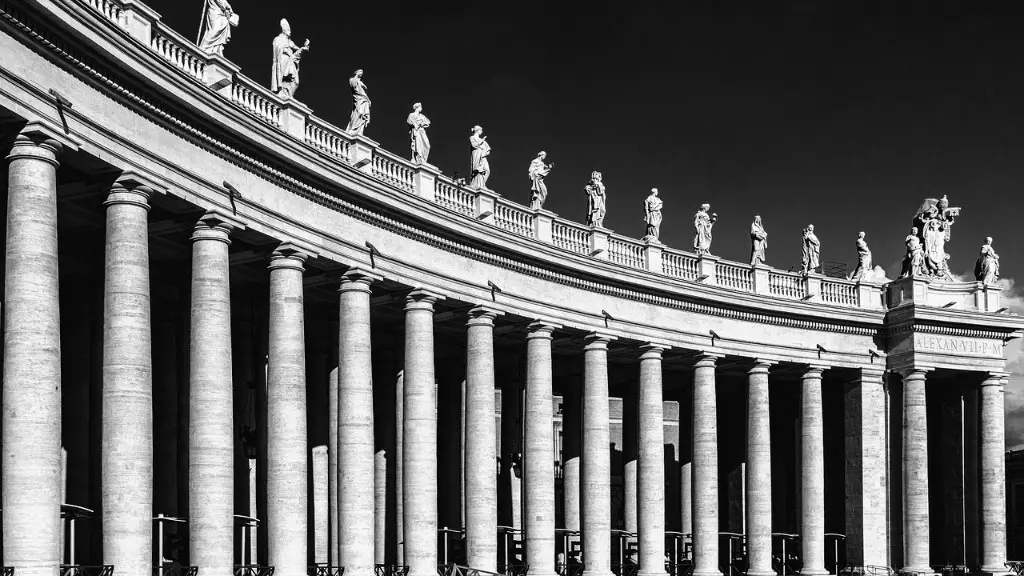The heart of the Roman Empire was Rome, one of the greatest cities of antiquity. Ancient Rome began as a small settlement but would eventually become one of the most powerful empires of the ancient world. But who were some of the first rulers of ancient Rome?
The earliest recorded rulers of Rome are the seven kings who reigned in succession from Rome’s founding in 753 BC to the establishment of the Roman Republic in 509 BC. According to the myth, Romulus was the first king. He is said to have founded Rome in the 8th century BC, and is credited with the rule of Rome for 38 years. The second king was his brother, Remus, who ruled for three years, followed by four Etruscan kings.
The last king of Rome was Tarquin the Proud, from the Etruscan dynasty of Tarquinii. He took the throne in 534 BC. His rule was oppressive and tyrannical, which led to a revolt and the founding of the Roman Republic in 509 BC.
The Roman Republic was a period of political and social upheaval that lasted from 509 BC until the establishment of the Roman Empire in 27 BC. The Roman Republic was a period of political, social and military turbulence. The republic was a government form that consisted of a senate, elected magistrates and a complex system of laws and rights. After the death of Julius Caesar in 44 BC, the Roman Republic was replaced by the Roman Empire.
The Roman Empire was a powerful civilization that dominated much of Europe, North Africa and the Middle East for more than 500 years. Augustus was the first Emperor of Rome, ruling from 27 BC until his death in 14 AD. He was the adopted son of Julius Caesar and the last ruler of the Roman Republic. He is credited with the transformation of Rome from a republic to an empire and is considered one of the great military, political, and administrative leaders in history.
Throughout its long history, Rome was ruled by many different emperors. The last emperor to rule over Rome was Romulus Augustus, better known as Romulus Augustulus. He was the last emperor of the Western Roman Empire, reigning from 475 to 476 AD before the Western Empire was abolished by order of the Germanic leader Odoacer and replaced by the Ostrogothic kingdom.
Though the Roman Empire has long since fallen, its legacy lives on in many aspects of western culture and civilization, such as law, government, art, language, literature and architecture. Its influence can still be seen today in the languages and cultures of many present-day nations.
The Roman Republic
The Roman Republic was the period of ancient Roman civilization between the establishment of the Roman Republic in 509 BC and the establishment of the Roman Empire in 27 BC. This period was marked by political unrest and military turbulence as the Senate wielded power by electing magistrates, creating laws and ensuring the rights of Roman citizens. It was during this time that Julius Caesar rose to power, becoming one of the most important figures in Roman history. After his death, Augustus came to power and the Roman Republic was transformed into the Roman Empire.
The Roman Republic was a complex system of laws and rights, where citizens had to obey the laws of the Senate and were expected to pay taxes, participate in the military and serve in government. During this tumultuous period, several wars were fought, most notably The Punic Wars against Carthage and the Social War against the Italic peoples. The Roman Republic also saw the rise of great military and political leaders such as Scipio Africanus and Cato the Elder.
Though the Roman Republic was eventually replaced by the Roman Empire, the legacy of their political and military systems live on today through their influence on the governments of many modern countries.
Emperors of Rome
The Roman Empire is a time period that spanned over 500 years, beginning in 27 BC and ending in 476 AD. During this time, many different emperors rose to power in Rome, each leaving their own legacy. Some of the most influential emperors include Augustus, Tiberius, Caligula and Nero.
Augustus was the first Roman emperor and the founder of the Roman Empire. He was the adoptive son of Julius Caesar and reigned from 27 BC until his death in 14 AD. He is regarded as one of the great military, political and administrative leaders in history. His legacy includes the reorganization of the Roman government, the expansion of the empire and the introduction of Pax Romana, an era of relative peace throughout the empire.
Tiberius was Augustus’ successor, ruling for 24 years from 14 to 37 AD. He was considered to be a wise and capable ruler, expanding the empire’s territories and maintaining peace. He began the practice of appointing “pretorian prefects” to run the military, and is credited with founding several new cities.
Caligula was the next emperor of Rome, reigning from 37 to 41 AD. He was known for his excessive behavior and cruelty, and is remembered for his many extravagant building projects and acts of debauchery. Despite his vices, Caligula brought order to the administration of the empire and was a successful military and political ruler.
Finally, Nero was the last of the Roman emperors, ruling from 54 to 68 AD. He is remembered for his extravagance and brutality, and was infamous for his persecution of Christians. Despite his negative reputation, Nero was a great builder and was responsible for the construction of many grand monuments and buildings, some of which stand in Rome today.
The Legacy of Rome
Though the Roman Empire has long since fallen, its legacy lives on today in many aspects of western culture. Its influence can be found in the structure of governments, art, literature and language of many countries in Europe and beyond. The Roman Empire’s legal system has lent itself to many of the legal concepts of our modern society, such as the idea of trial by jury and the establishment of professional law courts. The impact of Roman law can also be seen in the use of Latin phrases such as “mens rea” and “actus reus” in present-day legal theory.
Roman architecture and engineering have also had a lasting legacy. The road network, aqueducts, fortifications and arenas of Rome have been copied and copied over the centuries. The Colosseum, perhaps the most recognizable building in Rome, is a testament to the achievements of Roman architects. The Pantheon and the Trevi Fountain are other iconic Roman structures that can still be found in modern-day Rome.
In addition, Roman art and literature continue to be influential and pervasive in present-day society. The works of Ancient Roman authors such as Virgil and Ovid stand as a testament to the quality of Roman writing and literature. Roman sculpture, mosaics and frescoes are still considered some of the greatest works of art in the world, and have served as an inspiration to many of the great Renaissance and modern luminaries.
Conclusion of Roman Rule
The Roman Empire fell in 476 AD following the Germanic leader Odoacer’s overthrow of the last emperor, Romulus Augustulus. This marked the end of the Western Empire, leading to centuries of upheaval in Europe. The legacy of the Roman Empire is still visible in the politics, languages, art, architecture and literature of many European countries. The impact of Roman law can also be seen in the legal systems of present-day nations.
Though many of the original Roman rulers have faded into history, the legacy of their rule lives on in the many aspects of everyday life in Europe and beyond.





